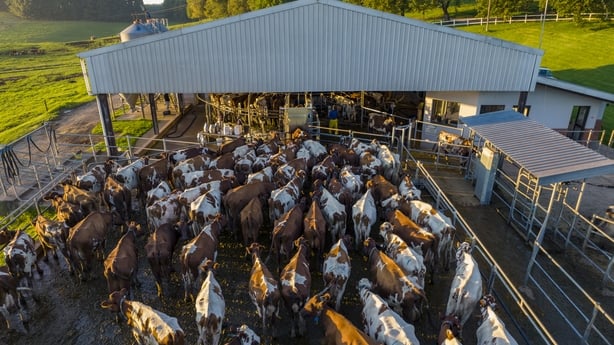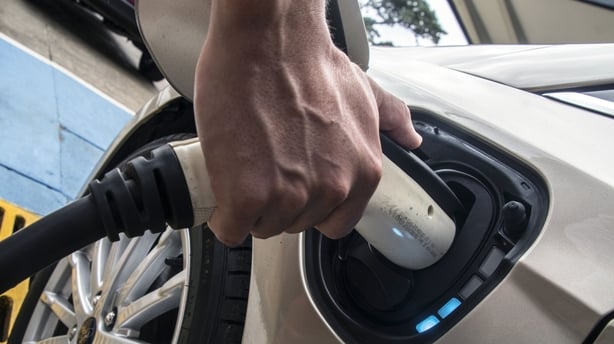The report from the Irish Fiscal Advisory Council and the Climate Change Advisory Council is a brave attempt to answer an impossible question.
Exactly how much is it going to cost Ireland if it carries on the way it has been carrying on with regard to climate action?
We know for certain - and we have known this for quite a while - that Ireland is on course to spectacularly miss its 2030 greenhouse gas emissions targets.
The Environmental Protection Agency has been warning us about this year in and year out.
It is the EPA's job to analyse the effectiveness of the Government’s climate action measures, project them forward and let people know how close to our legally binding 2030 emissions targets those measures will take us.
Frankly, on that front, we have never had good news.

For instance, the latest update from the EPA shows that while Ireland is committed to deliver a 42% reduction in greenhouse gas emissions from transport, buildings, small industry, waste, and agriculture by 2030, we are currently running 5% above the required trajectory and heading to overshoot the target by 57%.
For the European Union, these sectors account for 60% of overall greenhouse gas emissions.
But in Ireland they amount to 71%.
The reason why Ireland’s figure is so high is because agriculture makes up such a significant part of our economy.
It is the largest single contributor to Ireland’s greenhouse gas emissions.
Until now however, nobody has bothered to put a template together to give people an idea of what these emissions overshoots could mean for the taxpayer.
Read more: Massive costs if Ireland misses climate targets - report
That is not surprising because there is so much uncertainty about so many of the numbers needed to do such an analysis.
For instance, we do not know how carbon trading in the European Union is likely to operate by 2030.
It is known for instance that Germany, France and Italy - the three largest European economies - are way off course in terms of their own greenhouse gas emissions.
They too will be competing to buy whatever carbon credits are available within the European Union by 2030.
Will there be any credits left for Ireland to purchase by the time such big operators have done their business?
And will there be enough credits to go around in the first place?
Right now, a total of 18 different European countries are on course to miss their emissions targets.
Only Spain, Greece, Portugal, Luxembourg and Slovenia are on target and there is no guarantee any of them will sell their surplus credits.
It is also highly unlikely the combined surplus carbon credits of those few countries will cover the combined shortfall in the 18 laggard nations.
The price of carbon credits could yet go through the roof. Nobody knows.

It is also not known what the response of the Intergovernmental Panel on Climate Change (IPCC) will be to the new scientific work relating to the short time methane stays in the atmosphere.
The new science suggests significantly reduced estimates for the global warming potential of methane gas.
This work is under active consideration by the IPCC and could yet significantly reduce calculations of the carbon equivalence of agricultural emissions.
This could benefit Ireland, but again, it is another area of uncertainty.
It is unclear what new additional climate measures the Government is prepared to introduce, or how quickly they will do it.
There are a range of additional climate action measures indicated in the Climate Action Plan, but they require significant investment and commitment by the Government.
They included further supports for electric cars, substantial upgrading of the electricity grid, significant support for forestry, the rewetting of bogs and lots more.
Such measures would be very effective for reducing emissions, but they are very expensive and require huge Government commitment.
Perhaps that is why the Government has been happy to write them down on paper in the Climate Action Plan, but reluctant so far to really bite the bullet and deliver the huge financial resources needed to make them happen.
Clear and credible template
Marie Donnelly outlined in the report that it would cost €12 billion to upgrade the national electricity grid, reduce the cost of electric cars for a third of households to below €15,000 and invest in necessary supports for forestry and wetting bogs.
The Irish Fiscal Advisory Council’s analysis suggests that these measures alone could halve the overshoot in greenhouse gas emissions by 2030 and consequently cut Ireland’s future carbon credit bill in half.
That is perhaps the most important finding in the report.
The analysis suggests that if the Government rapidly and spectacularly implemented all additional climate action measures successfully then the overall bill for carbon credits by 2030 could be as low as €3 billion.
Against that, the bill could be as high as €26 billion if the Government leaves the situation as it is with no additional measures being implemented.
Arguably, however, a cost range of "somewhere between €3 and €26 billion" is too inexact.
One could pick every number in between and not be wrong.
But the thing that is most useful about the work outlined by the Irish Fiscal Advisory Council and the Climate Change Advisory Council is that they have pulled together all the threads about how one would go about calculating the cost of failing to achieve emissions targets.
The report openly highlights uncertainties related to the numbers, but it provides a clear and credible template for how to work it all out.
In doing this, the Irish Fiscal Advisory Council has shown unequivocally that, although climate action may indeed be very expensive and quite disruptive, it is far, far cheaper than climate inaction.
And that is surely a policy conclusion that will stand the test of time.








